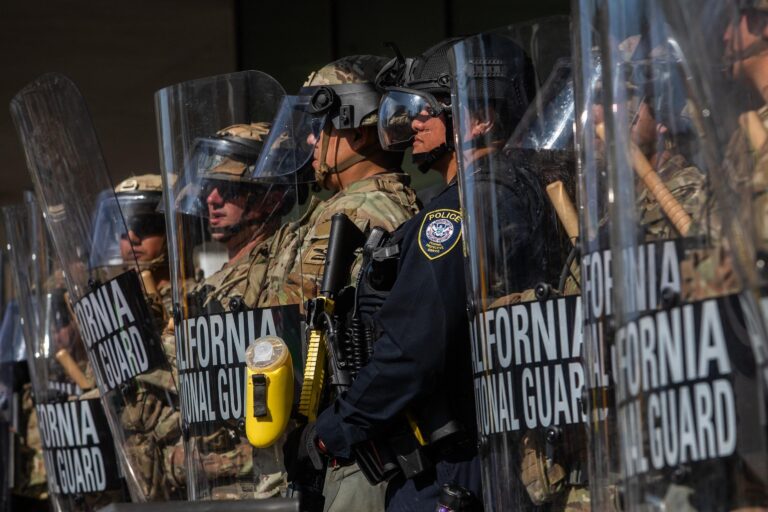June 9-10 Los Angeles Immigration Raid Protests: A Comprehensive Recap
Major Developments During the Los Angeles Immigration Raid Demonstrations
On June 9 and 10, Los Angeles became the focal point of widespread activism as thousands took to the streets in response to recent federal immigration raids. Protesters assembled at prominent locations such as Downtown Los Angeles, Echo Park, and East Los Angeles, calling for justice and sanctuary protections for undocumented immigrants.Participants brandished signs with slogans like “Protect Our Families” and “Stop the Raids Instantly,” drawing attention to the human consequences of immigration enforcement. Local advocacy groups organized peaceful marches, symbolic die-ins, and spontaneous vigils, fostering a sense of unity with those impacted by the raids.
The demonstrations elicited varied reactions from officials and law enforcement, reflecting the charged atmosphere of the events. Key highlights include:
- Massive assemblies: Organized marches commenced mid-morning, drawing a diverse crowd.
- Public addresses: Activists and elected officials voiced calls for immigration reform.
- Police deployment: Officers were strategically stationed to oversee the protests and ensure safety.
- Community outreach booths: Provided resources on immigrant rights and legal assistance.
| Date | Location | Approximate Attendance | Event Type |
|---|---|---|---|
| June 9 | Downtown Los Angeles | Over 2,500 | March and Rally |
| June 9 | Echo Park | Approximately 1,200 | Vigil and Speeches |
| June 10 | East Los Angeles | More than 3,000 | Community Assembly |
Local Community Reactions and Effects of the Protests
The protests deeply affected neighborhoods throughout Los Angeles,stirring a mix of solidarity and disruption among residents. Many locals stood in support of the demonstrators, voicing long-held concerns about immigration enforcement and its repercussions. Areas adjacent to protest sites became hubs for grassroots support, where community members organized to provide meals, legal counseling, and safe spaces for dialog.For numerous participants, the events rekindled civic involvement and motivated initiatives aimed at bridging gaps between immigrant populations and municipal authorities.
Conversely,the protests also caused interruptions to everyday routines. Some residents reported challenges with transportation due to street closures, while small businesses experienced fluctuations in customer visits and logistical delays. The table below summarizes the immediate community impacts observed during the two-day period:
| Effect | Details | Community Response |
|---|---|---|
| Traffic Interruptions | Street closures and increased police presence | Alternative routes shared via social media platforms |
| Business Disruptions | Decline in foot traffic and delayed deliveries | Some shops offered discounts to protest participants |
| Legal Assistance | Urgent need for legal guidance | Volunteer attorneys staffed data booths |
| Safety Concerns | Fears of potential clashes or violence | Community patrols and mediation teams established |
Law Enforcement Response and Operational Challenges
Throughout the June 9-10 protests, law enforcement agencies encountered considerable obstacles in managing the large crowds that gathered in reaction to the immigration raids. Officers were tasked with maintaining public order while safeguarding the rights and safety of both demonstrators and bystanders. The strategic use of barricades and tactical positioning helped prevent escalation into violence. Nonetheless, coordination difficulties arose due to the fast-changing dynamics and the involvement of multiple agencies.
The protests featured a wide array of participants, including families, legal observers, and activists, which added complexity to law enforcement’s approach.Key challenges included:
- Deploying sufficient personnel to manage unpredictable crowd sizes and movements.
- Countering misinformation that heightened tensions during the demonstrations.
- Addressing community mistrust regarding enforcement tactics used during the raids.
| Challenge | Measures Implemented | Result |
|---|---|---|
| Managing Large Crowds | Increased officer deployment and barrier setups | Order maintained with no significant incidents |
| Dialogue Breakdowns | Established mobile command centers | Enhanced coordination among agencies |
| Community Distrust | Engaged local leaders for dialogue sessions | Reduced misinformation and eased tensions |
Policy Recommendations and Community Empowerment Strategies
Meaningful reform requires a dual focus on compassionate immigration policies and strengthening community support frameworks. Essential recommendations include:
- Bolstering legal safeguards: Expand citizenship pathways, guarantee fair legal processes, and curtail indefinite detentions.
- Adopting community-focused enforcement: Transition from broad raids to precise investigations that minimize harm to families and neighborhoods.
- Investing in local support services: Increase availability of legal aid, mental health resources, and housing assistance for undocumented individuals.
- Ensuring transparency: Implement mandatory reporting and oversight for immigration enforcement activities.
Local governments and organizations play a crucial role in building trust and resilience. Community-led initiatives can alleviate fear and disruption caused by enforcement actions. The table below highlights successful support programs from cities known for immigrant-friendly policies:
| City | Support Program | Outcomes |
|---|---|---|
| San Francisco | Sanctuary city ordinances | Fewer ICE detainers, enhanced community trust |
| Chicago | Funding for immigrant legal services | Greater access to legal counsel, reduced deportations |
| New York City | Community education and outreach | Improved awareness of rights, decreased fear |
Final Reflections on the June 9-10 Protests and Their Broader Significance
The demonstrations in Los Angeles on June 9 and 10 brought to light the deep divisions and heightened emotions surrounding immigration enforcement in the city. Large crowds voiced their opposition to federal raids, while law enforcement maintained a visible presence to manage public safety.These events epitomize the ongoing tension between advocacy groups and authorities, mirroring national debates that continue to influence immigration policy and community relations. As developments unfold, the lasting effects of these protests on local immigration practices and public attitudes will remain critical to monitor.




